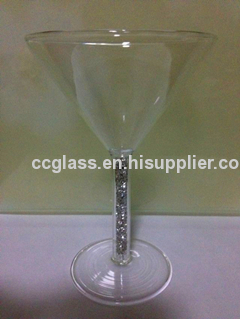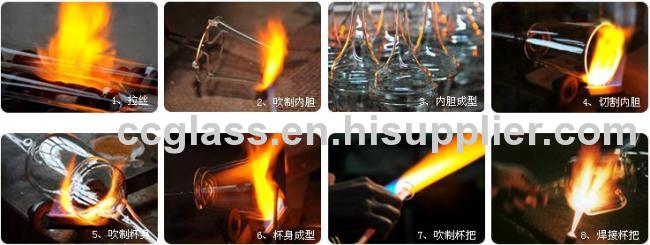Hand Made Single Wall Borosilicate Martini Glass

Martini Glass
A cocktail glass (also called a martini glass) is a stemmed glass which has a cone-shaped bowl placed upon a stem above a flat base.
It is mainly used to serve cocktails. Its form derives from the fact that all cocktails are traditionally served chilled and contain an aromatic element. Thus, the stem allows the drinker to hold the glass without affecting the temperature of the drink, and the wide bowl places the surface of the drink directly under the drinker's nose, ensuring that the aromatic element has the desired effect.
All our Martini Glasses (or Cocktail Glass) are made of high quality borosilicate glass with sophisticated hand blown craftsmanship
Borosilicate Glass
Borosilicate glass is a type of glass with the main glass-forming constituents silica and boron oxide. Borosilicate glasses are known for having very low coefficients of thermal expansion(~3 × 10−6 /°C at 20°C), making them resistant to thermal shock, more so than any other common glass.
In addition to the quartz, sodium carbonate, and aluminum oxide traditionally used in glassmaking, boron is used in the manufacture of borosilicate glass. The composition of low expansion borosilicate glass such as those laboratory glasses mentioned above is approximately 80% silica, 13% boric oxide, 4% sodium oxide, and 2-3% aluminum oxide. Though more difficult to make than traditional glass due to the high melting temperature required, it is economical to produce. Its superior durability, chemical and heat resistance finds excellent use in chemical laboratory equipment, cookware, lighting and, in certain cases, windows.

Sophisticated Hand Blown Craftsmanship,Uniform Mold
As a more advanced glass material,Borosilicate glass were widely used in Chemical and Medical industry and High end Kitchenware in most European and American countries.With sophisticated mouth blown craftsmanship,workers needs to constantly rotate the glass embryo in order to heat the glass uniform.This is the most significant special features of hand made glasswares compared with other glasswares







